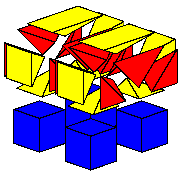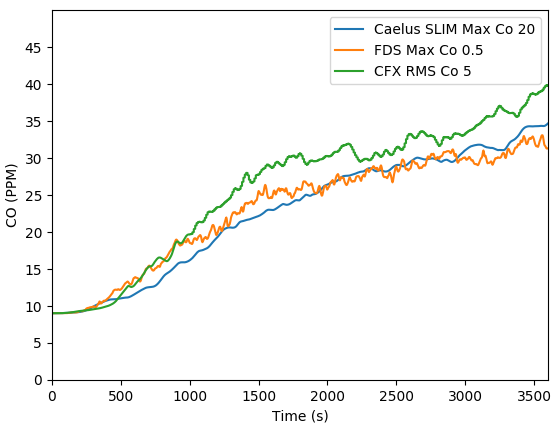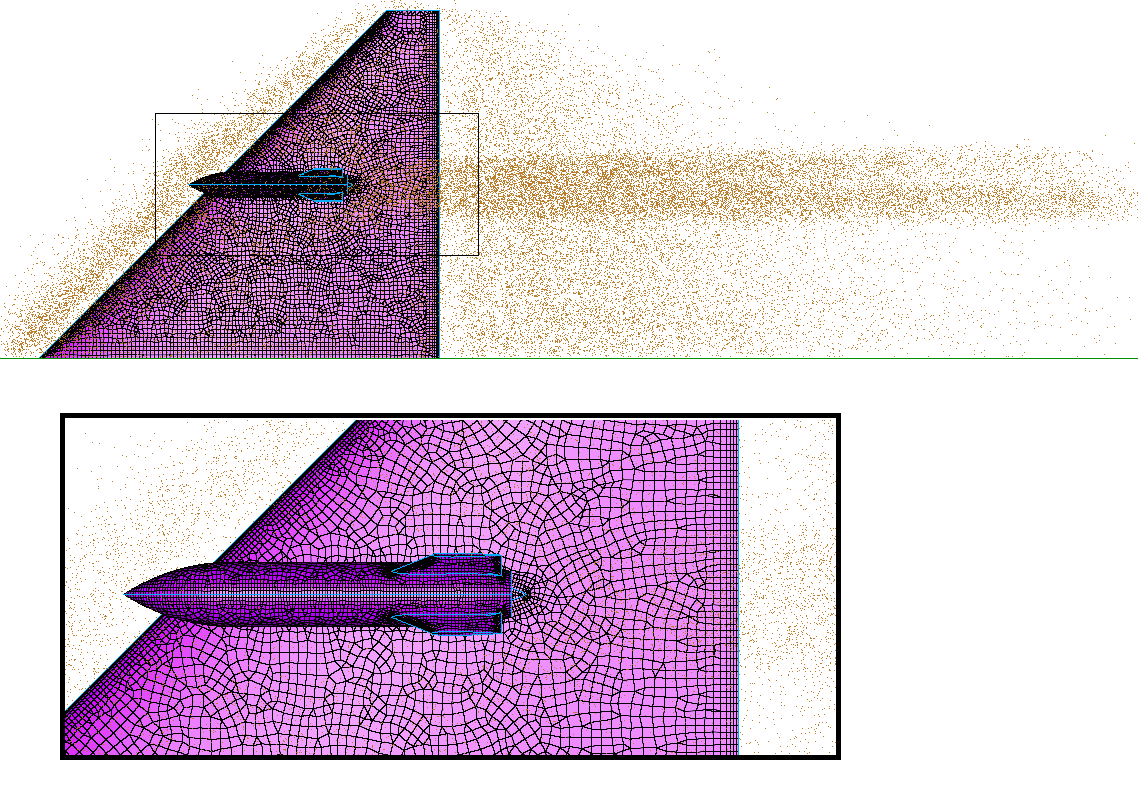This monthly mesh we refer readers to our guest blog “Recombination of Voxel Transition Cells…
Mesh Independence for Car Park Ventilation
Introduction
This monthly mesh we discuss part 2 in a blog series on “Car park Ventilation CFD with Pointwise, Caelus, CFX and FDS”. First published in Another Fine Mesh on 27th May 2020, we continue the discussion, in particular, mesh independence. As a CFD engineer, you would likely have carried out mesh independence tests to ensure the element size doesn’t overly affect results or analysis conclusions.
We continue comparing FDS with a mainstream fully-featured CFD solver Caelus (OpenFOAM derivative) for a typical car park. Caelus forked from OpenFOAM-2.1.1, has been restructured to create a stronger foundation on which to build your open-source CFD solutions. More information on the Caelus solver can find this at www.caelus-cml.com or the SLIM solver, in several of our publications.
Base Mesh Car Park
Figure 1 shows the comparison of FDS and Caelus SLIM for Velocity and CO. One can see broad similarities between the velocity and CO field by the two solvers. The significant differences are attributable to the turbulence models chosen. FDS uses a variant of the “Large Eddy Simulation” (LES) turbulence model. These Caelus simulations used the “Unsteady Reynolds Averaged Navier-Stokes (URANS) k-omega SST turbulence model resulting in a smoother flow field.
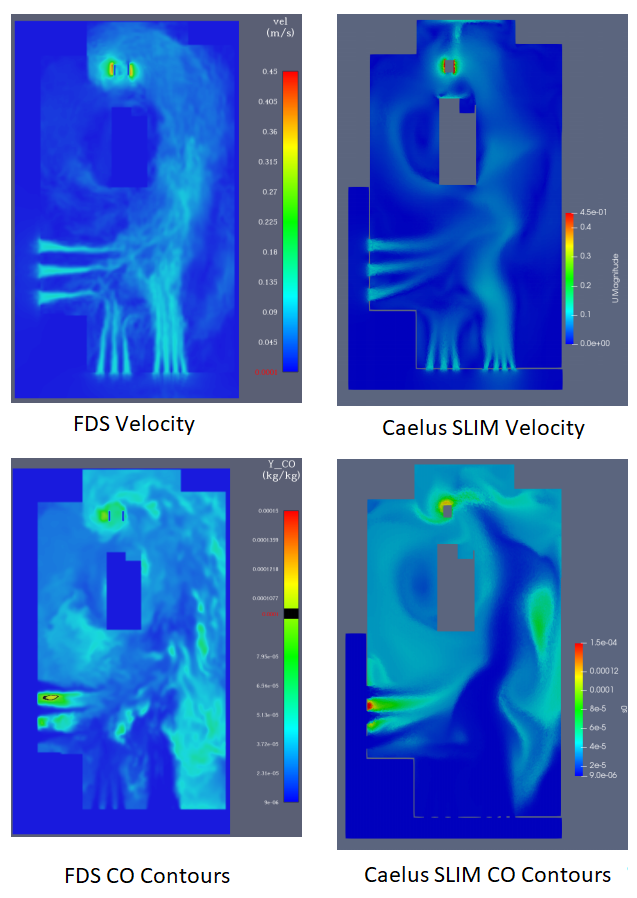
Mesh Independence
An investigation into mesh sensitivity compares the base mesh (element size 0.25 m) to half size mesh (0.125 m) and quarter size mesh (0.0625 m). FDS and Caelus SLIM Hybrid compare the effect of the mesh size. Caelus SLIM Hybrid is a method where a steady solution restarts in transient scalar only mode. A summary of the time trace of average CO mass fraction at the height of 1.5 m over time, as shown in Figure 2. The solution was not dependent on the resolution of the mesh below cell size of 0.25 m as shown. It concluded that the base mesh solution was insensitive to the mesh resolution chosen.
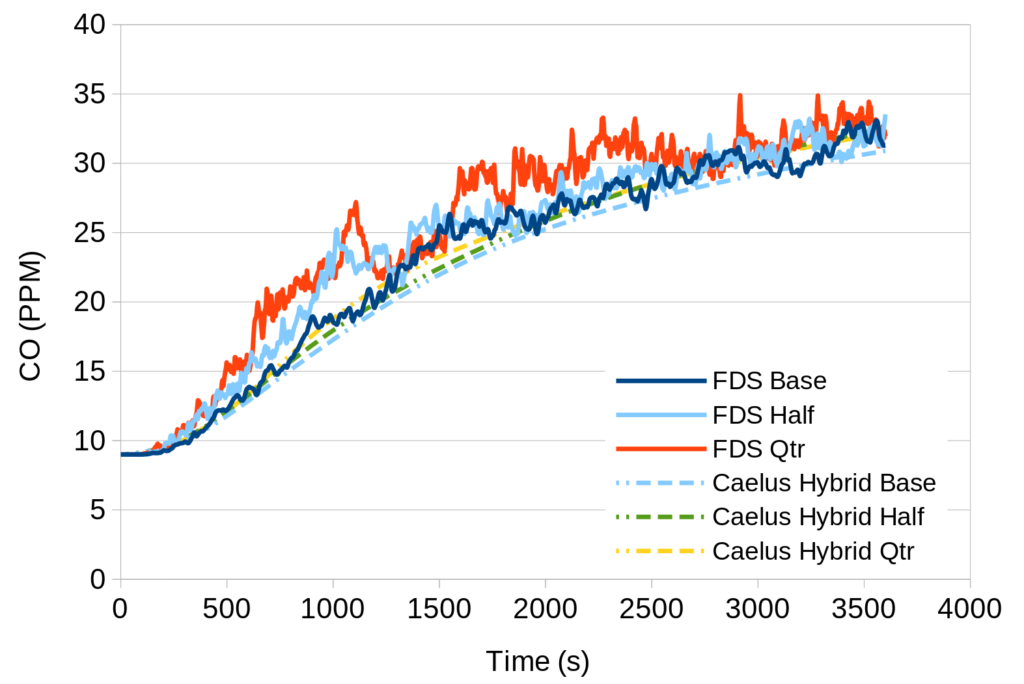
We hoped you enjoyed this blog on Mesh Independence for Car Park Ventilation. Part 1 in this series can be found here.
If you would like a free trial of Pointwise follow the link.
17.
Mesh Independence for Car Park Ventilation

